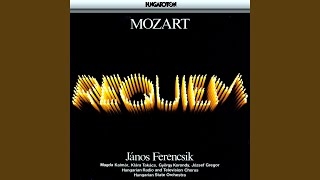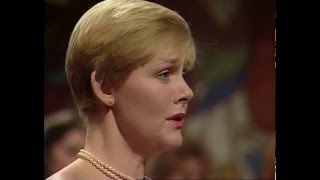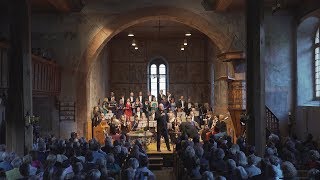Friday, 26 December, 2025г.
















Где искать: по сайтам Запорожской области, статьи, видео ролики
пример: покупка автомобиля в Запорожье
Wolfgang Amadeus Mozart - Great Mass {Grosse Messe} in C minor
- Composer: Wolfgang Amadeus Mozart (27 January 1756 -- 5 December 1791) - Orchestra: English Baroque Soloists - Choir: Monteverdi Choir - Conductor: John Eliot Gardiner - Soloists: Sylvia McNair (Soprano), Cornelius Hauptmann (Bass), Anthony Rolfe Johnson (Tenor), Diana Montague (Mezzo Soprano) - Year of recording: 1986 Mass No. 17 for soloists, chorus & orchestra in C minor (fragment, "Great Mass"), K. 427 (K. 417a), written in 1782-1783. This is the Georg Aloys Schmitt completion from 1901. 00:00 - 01. Kyrie 07:24 - 02. Gloria in excelsis Deo 09:51 - 03. Laudamus te 14:26 - 04. Gratias 15:50 - 05. Domine Deus 18:30 - 06. Qui tollis 24:49 - 07. Quoniam 28:39 - 08. Jesu Christe — Cum Sancto Spiritu 33:13 - 09. Credo in unum Deum 36:44 - 10. Et incarnatus est 44:53 - 11. Sanctus — Osanna 48:36 - 12. Benedictus — Osanna After Mozart married Constanze Weber on 4 August 1782, he pledged to compose a mass in her honor to be performed in Salzburg when the newlyweds visited Mozart's father. (According to Constanze, the mass was composed in thanks for her safe recovery from the birth of their first child.) When Mozart wrote to his father in January 1783, he noted that the Mass in C minor was half finished, but when he arrived in Salzburg in late July, it was still incomplete and would remain so at Mozart's death. In fact, Mozart finished almost none of the pieces he wrote for his wife (she particularly liked fugues and canons). Because of reforms handed down from Emperor Joseph II, there was little chance of having a large sacred piece performed in Vienna, so there was no professional motivation for Mozart to complete the piece. Also, Mozart was very busy trying to secure commissions and a court appointment. Mozart and Constanze stayed in Salzburg for several months, during which time their new baby, left behind in Vienna, died. On 26 October 1783, the Kyrie and Gloria of the C minor Mass received their first performance in St. Peter's Church, with Constanze singing the soprano solos. (St. Peter's was not under the jurisdiction of the Archbishop of Salzburg, who by this time despised the younger Mozart.) References to a "finished mass" suggest Mozart may have filled in the Credo, Sanctus, and Agnus Dei with sections from his earlier masses. In Mozart's autograph manuscript of the Mass in C minor we find only the Kyrie, Gloria, the Credo through the "Et incarnatus est," and drafts of the Sanctus and Benedictus. Mozart musically reflects the ternary division of the Kyrie and divides the Gloria into its traditional seven parts. Composition on the Mass in C minor took place in the midst of Mozart's introduction, through Baron Gottfried van Swieten, to late Baroque vocal composition, particularly the works of J.S. Bach and Handel. This influence is clear in the large, stately choruses, some in eight parts. In the "Qui tollis" movement we hear a recurring bass line that descends through a fourth in Baroque fashion. Both the duet, "Domine Deus," and the "Quoniam" trio have a Handelian flavor, not least in their light, somewhat continuo-like scoring. Handel's presence is most clear in the quotation of a rhythmic idea from Messiah, with which Mozart sets the words "in excelsis." Much of the work, however, is firmly rooted in the Austrian Church-music style, and for many of the fugues in the C minor Mass there are Austrian precedents. Mozart used parts of the Kyrie and Gloria for an oratorio (with a libretto by Lorenzo Da Ponte?), Davidde penitente, K. 469, in 1785.
Похожие видео
Мой аккаунт


 У вашего броузера проблема в совместимости с HTML5
У вашего броузера проблема в совместимости с HTML5![Mozart - Missa in C minor, K. 427 / K. 417a [complete] (Great Mass)](/images/mq/4/54/erTYSKYk74Z3Zb.jpg)


